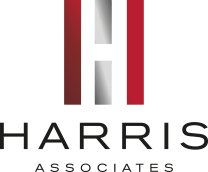The Key Parties
There are three notable new roles and parties that have been created under the BSA. Firstly, regulatory oversight and legislative policing will be carried out by the Building Safety Regulator (Regulator). The BSA names the Health & Safety Executive as the new Regulator, and it will be the HSE that leads the implementation of the new regulatory framework.
The other two roles that the BSA has created are the Accountable Person (AP) and the Principal Accountable Person (PAP).
The AP is the entity that is responsible for the building, usually the owner. An AP is required to be appointed for all occupied high-risk buildings (a building with a storey height of at least 18 metres or seven storeys). The BSA provides clarity that an AP can be an individual, organisation or business.
Where there is more than one AP (such as a board of directors) a Principal Accountable Person (PAP) needs to be appointed.
The AP has a duty to take all reasonable steps to prevent a building safety risk from occurring and to reduce the seriousness should one happen. In short, the AP has the following broad responsibilities:
- Ensure the building is registered with the Building Safety Regulator (deadline: 30th September 2023)
- Ensure a Building Safety Case (the “Safety Case”) is prepared
- Ensure a formal Building Safety Case Report (the “Safety Case Report”) is prepared, reviewed and updated regularly
- Ensure effective resident engagement and communication
The AP / PAP need to ensure that they are cognisant of the core issues that affect the management of their building, including knowledge of the background information, risks, systems, mitigation measures, and reasoning behind actions and decisions and should be able to overtly evidence their overall control.
The Timescale
The registration of high-risk buildings with the Regulator must be achieved by 30th September 2023. Following registration, the AP / PAP will be required to ensure that the key building information is submitted within 28 days of the initial registration process. The indications are that the Regulator will commence SCR reviews from April 2024.
The Safety Case
The Safety Case can best be described as the sum of the information, arrangements and systems that are used by the AP / PAP to manage the following:
- The risk of fire breaking out and spreading includes consideration of fumes, smoke, heat and flames.
- The potential for structural safety being breached either by structural or other physical failure or from the effects of fire.
Each site and building will be different, one size will not fit all. It will be imperative that the collation and use of the information, arrangements and systems allow the AP / PAP to manage effectively. The documentation and records should be provided in digital format, continually / regularly updated and include systems, maintenance, and management data.
The Safety Case Report
The Safety Case Report (SCR) is the document that summarises the Safety Case. The preparation of a SCR requires clarity of thought, accuracy and attention to detail and will require regular review and updating and will form a critical pillar of a building’s registration with the Building Safety Regulator.
The SCR will need to justify and set out why a building is considered safe. This can be achieved by evidencing how the information demonstrates that all reasonable steps have been taken and that a clear link exists between management controls and all identified risks. The SCR will also serve to evidence that the AP(s) / PAP are continuing to manage and control any residual risks that cannot reasonably be removed entirely.
The SCR must provide a summary of the information that has been gathered and assessed as part of the Safety Case and where possible, links or references to the detailed information within the Safety Case should be provided. It is important to note that the SCR cannot simply comprise a list of the information that makes up the Safety Case, and as with the Safety Case, the SCR should not comprise the product of the generic or standardised process.
It is of utmost importance to ensure that the narrative of the SCR is relevant, the content substantiated and the composition proportionate. The detail of the SCR must be reflective of the simplicity/complexity of the building and the AP(s) / PAP organisation.
The Approach-Why Harris?
The SC and the SCR require competent individuals and organisations with a range of skill sets and knowledge. Such is the breadth of expertise required that it is highly unlikely that a single individual will be able to advise on the SC or prepare the SCR, particularly given the high-risk nature of the buildings that fall in the scope of the BSA. The nature of a SCR is such that it will require a multi-skilled and multi-faceted collective approach comprising a number of different professionals.
The compilation of the SCR requires that the author(s) have knowledge of infrastructure, systems, construction technology, services, risk management, procedural matters, statute, engineering, fire safety and so on. At Harris Associates, we have a dedicated team dealing with compliance matters, including the preparation of Safety Case Reports. Our in-house compliance team comprises chartered surveyors, chartered engineers, technicians and fire safety professionals. Our breadth of skills and experience is matched by our attention to detail, organisational ability and our approach to client focus.

